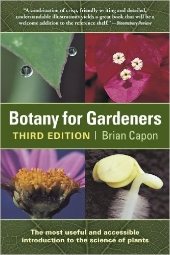Hi, I am new to permaculture too. I started planning my food forest/biointensive garden last April (when we moved into our current house after many months of remodeling it from vacant cat 2 condition). I am just planting a large amount of plants this spring.
The reason it took almost a year to start here was that I knew I needed to learn about our land before I could think about it systematically. As you already noticed, learning where sun is and isn't will help you get started. There is no web app to help you with this because all of the man-made and natural objects on your landscape will affect sun/shade as much or more than the global patterns of sun height/angle. Easier just to walk around your property areaand record observations of shaded areas and sun for each season. This will take a year but in the meantime you can do a lot of other prep work.
If you are in a city area, you may want to test soil for lead, and no matter where you are, you will want to test soil ph. We did the ph testing ourselves from samples all over the yard. Also dig holes to see what lies beneath (how far down does your topsoil go? is there hard pan or clay? is it full of rocks? a buried sidewalk or abandoned driveway?). Play archaeologist and cartographer for a summer. I made detailed 2D maps of my property and then created a 3D model based on those meaurements/drawings (Google Sketchup is very friendly if you are not a 3d graphics person already).
If you are doing any earthwork or cleanup (terracing, swales, hugelkultur, pulling out old landscape plants or hardscape, correcting drainage problems, installing fencing or espalier supports, creating new patio/deck/outdoor living areas, etc.) that also can fill up a spring/summer easily. Sheet mulch your lawn and future beds, then plant a cover crop on top. This will start building soil a year in advance and make your first plantings that much healthier.
Researching plants, varieties, and determining our needs/yield goals took many months and is still a work in progress. Even after a year's research and designing I still feel the planting phase 1 here is coming "too soon" and am hoping I made good choices. It can be as simple and improvised as you like, or as researched and over-engineered as you prefer. I lean toward a lot of research because I do system design in my work and can't help it! That I consider Excel workbooks an essential gardening tool for myself says everything about my planning style. For you, maybe you just start small and build from there. There is no right or wrong way, only ways that make things more fun, less stressful, and more successful by your personal standards and preferences.
If you learn well from books, I have learned a lot from these books:
The Holistic Orchard - Tree Fruits and Berries the Biological Way by Michael Phillips (if you want fruit without harmful chemicals, this is an amazing super practical guide for exactly how to do it)
Gaia's Garden - A Guide to Homescale Permaculture by Toby Hemenway (everyone talks about this for a good reason... definitely helps with the big picture design thinking, not really a source for specific how-to info though)
I have a whole shelf of garden/permacultre/pruning/espalier books now but those two were really crucial in the design of my garden. I also suggest getting to know your local university resources (here it is University of MN) that publish free info for home gardeners with specific variety trials/recommendations. General garden books for your zone/area are also helpful (here I chose a series by Don Engebretson with books on trees & shrubs, perennials, etc. because although they promote ornamental gardening over food gardening, they are tailored to the climate I am in). Plus, for maximum biodiversity you will want some ornamentals, poisonous plants, and non-food plantings for beauty and beneficial insects/wildlife. For example, I found that Forsythia is a popular ornamental here for its super early yellow blooms but in an organic IPM article I also found it is a perfect host plant for parasitic wasps that help control Japanese beetles (a big pest in my yard). Oh, and spending a year observing plants in your yard/neighbor's yards will show you what pests to expect no matter what you plant.
Most of our first summer was spent pulling out unwanted trees and now this spring we have a bunch of wood to build hugel trenches/beds. We also took the time to build
compost bins and start composting yard/food waste last summer so we have some compost now this year. There is a lot you can do while you plan for your investment in trees and shrubs (which we are starting first because they take so long to establish... getting in our cane fruits, asparagus, etc. is a priority now even though it means we are skipping tomatoes and annuals that need seed starting until next year). Perennials first, to make the forest garden structure/top layers, then filling in with helper plants and annuals later. You might prioritize annuals and start with a bunch of herbs/veggies while you decide on the bigger perennials. Whatever feels right is probably what is best for your garden.























 2
2











